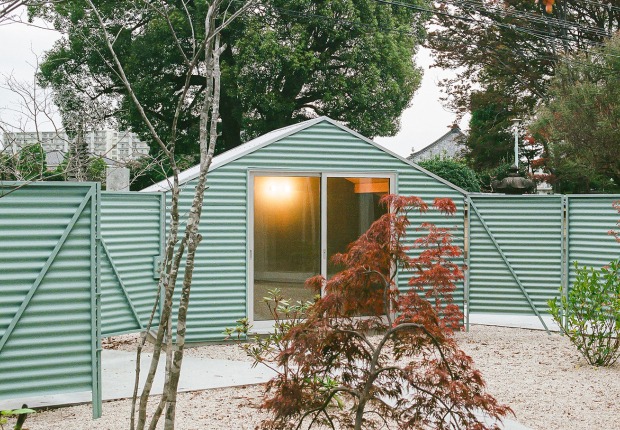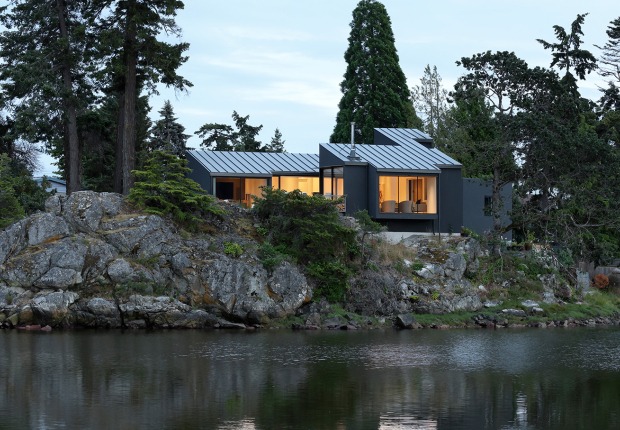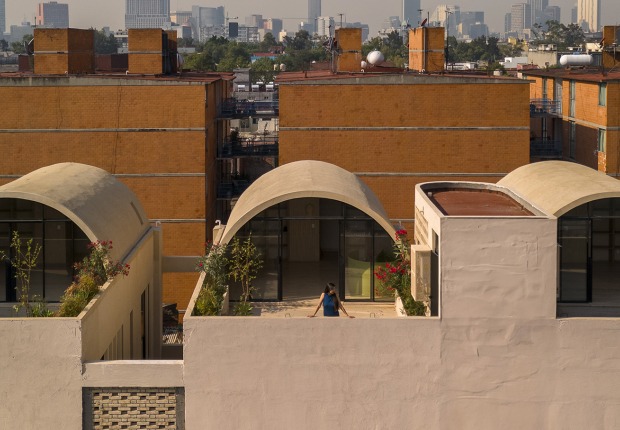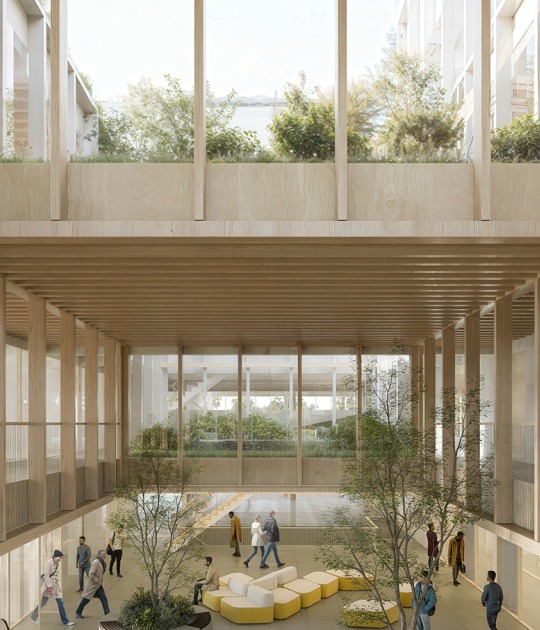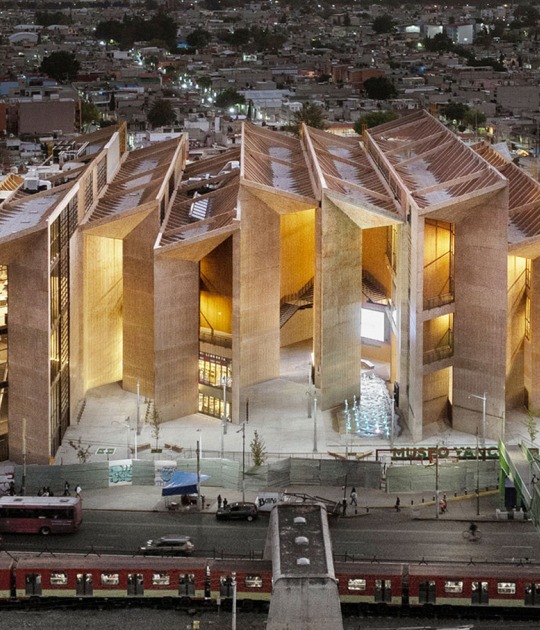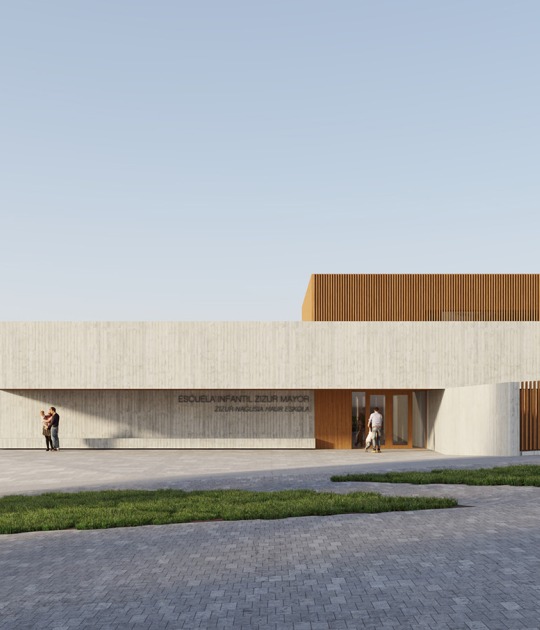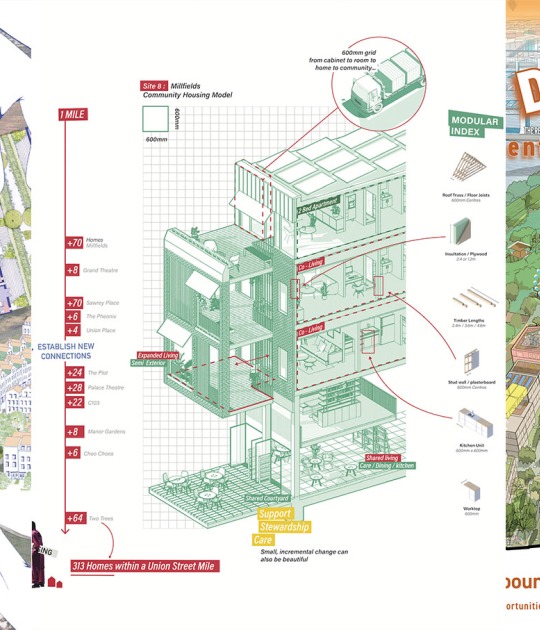The Dimnikcobau Business Park, in addition to being the first major step for the transformation of the industrial area of Moste - in the capital of Slovenia - into a vigorous business district, which will become one of the largest holdings of the medical and pharmaceutical sector of Central Europe. The BAX studio project operates on an area of 12,439 m², which includes the reorganization of the exterior areas, the remodeling of the facade of an existing building for offices, warehouses and logistics; as well as, the construction by stages of two new buildings.
BAX has designed a solution with an architectural language capable of printing a clear identity.
Project description by BAX studio
Dimnikcobau Business Park is the first big step in turning the industrial area of Moste into a dynamic business district for the Slovenian capital. The key element in what is to be the transformation of this area is the quality of its spaces, inside and out.
What all modern business centres have in common is a lively ground floor with cafés, restaurants, exhibition spaces and informal meeting places. To create an attractive setting of this kind, the project proposes a shared entrance that transparently connects the three Dimnikcobau office buildings and serves as a dynamic outdoor meeting space.
The design of the existing block in the industrial area is similar to the city’s orthogonal grid. The buildings in a grid city produce chamfered corners, a strategy that the project picks up for the new business centre. A corner of each new building in the business centre is set back to create a shared space.
With the aim of creating an innovative and welcoming interior, the proposal includes an atrium typology, the most energy efficient model of office building. The atrium draws natural light into all the spaces as well as accommodating vertical communications and the foyer, a clear distinction of class A buildings. It also houses the office space on the lower floors on the inside, and on the upper floors on the outside, where it opens up to the city centre and the mountains.
In order to create an iconic building on the site, bearing in mind the impossibility of constructing a tall slim building due to regulatory heights and the ground-floor proportions needed to accommodate the brief, the DBIII building planned in the initial phase adopts the strategy of moulding the volume by means of two large openings that connect the central atrium with its immediate surroundings and with the city.
A single rational design is applied to the façades of all the buildings, comprising vertical slats attached to the suspended glass façade which, due to their varied rhythm, constitute the overall appearance of the business centre. Where they reach the top floor, the slats become a pergola protecting the terrace around the VIP offices.
To create interiors that are at once welcoming, warm, representative and contemporary, the project proposes the use of wood with semi-transparent white varnish, combined with stone in the foyer, carpet in the office areas, the extensive use of indoor vegetation, and a combination of transparent and translucent glass.
Both new buildings have the same flexible office layout. The rhythm of the façade allows the placement of vertical divisions every 1.33 m. The depth of the work zone, from the façade, is five metres, which can accommodate all kinds of arrangements (individual offices, shared offices, open spaces, meeting rooms). All the office units have floor space of over 200 m², and the floor plan makes it possible to connect them to form a larger unit of approximately 2,000 m².
In the DBIII building in particular, there is also the possibility of creating interior stairways to connect two or more floors to be able to offer for rent offices of over 1500 m². The brief is organised vertically, top to bottom, as follows: the ninth floor is occupied by the VIP offices; the second to eighth by standard offices, and the first floor by the congress centre and meeting rooms, and the ground floor is reserved for the semi-public brief: foyer, art gallery, bar-restaurant and fitness area, the latter open outside office hours. The congress centre, foyer and restaurant are interconnected to enable synergies for special events. The congress centre accommodates 100 visitors.
Structural design, energy, cost-effectiveness, low maintenance and sustainability strategies
Both buildings primarily use a simple structural module of 8 x 8 m, the most rational and economically efficient construction system in Slovenia, in keeping with local industry and seismic requirements. The DBIII building uses a metal structure with diagonal reinforcements carefully positioned on the top floor and above the large opening in the south façade, where the space between pillars is larger. The pillars are positioned in the façade to enable maximum flexibility of office space, and earthquake stability is primarily ensured by rigid stair cores and emergency lifts.
DBIII and DBII are designed as low energy consumption buildings that use active and passive measures to achieve the most advanced energy concept. The atrium of DBIII also follows the concept of highly energy-efficient buildings that use the atrium as a heat-control buffer to warm the air in winter and cool the building in summer.
The proposal aims not only to be profitable in vital aspects such as the use of a standard structural mesh with just a few singular elements in key positions and the design of compact volumes to minimise façade surface or organise the office floor rationally; it also aims to be low maintenance. The project further aims to use as many sustainable materials as possible, such as wood in the interior of the atrium in DBIII, the façade modules, interior divisions and ceilings; recycled nylon for carpeting and recycled aluminium for vertical sun-shading elements.
Urban design
Access
Pedestrian access to all the buildings is via the shared level on the ground floor, crossing the street inside the block. This is the central place for informal outdoor meetings and offers clear orientation for users and visitors.
Traffic solutions
To keep the entrance as traffic-free as possible, all the new entrances to the car parks are situated west of the two new buildings. Given the need to maintain ramp access to the basement of DBI, traffic and parking around this building remain the same, separated from the restaurant terrace by thick vegetation.
The DBII building’s logistics area is in the northwest corner, in a space between DBII and its neighbour, intentionally separated from the shared entrance area.
Logistic access to DBIII is situated to the west, beside the ramp to the car park. The bicycle parking area is located to the south, producing an equidistant arrangement of access to the three buildings.
Green areas
The green areas offer views for offices on the lower floors. Thick vegetation (shrubs and trees) is planted along the west, north and south edges, and along the internal north-south street. The existing trees between DBI and DBIII are preserved and densified with selected vegetation (shrubs) to provide the terrace of the new restaurant with the necessary ambient temperature and shade in summer.
In the two courtyards of the DBII building, situated above the floors reserved for storage, trees and shrubs are planted to enhance views from the office spaces. The roof floors of the two new buildings, DB II and DB III, have an extensive low maintenance green roof.














